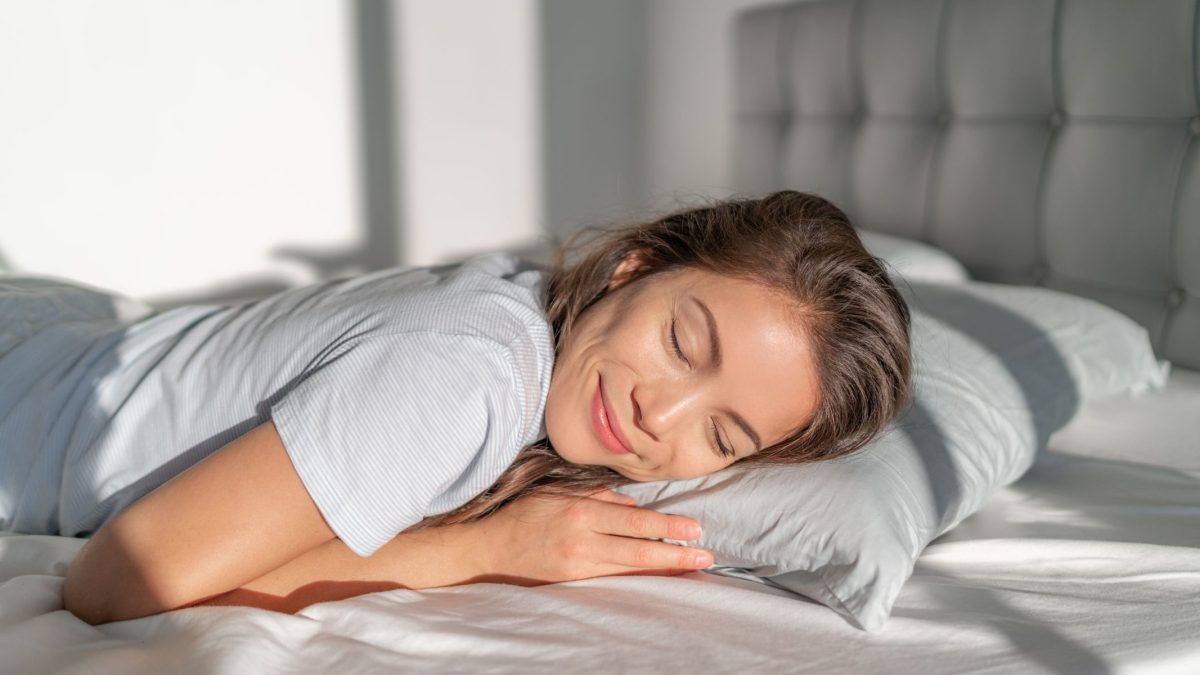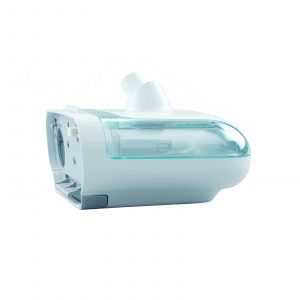Fact Checked
Intus Healthcare’s writers, customer service team, and sleep experts review and ensure this information is accurate.
Last updated on April 8th, 2024 at 01:25 pm
Your blood oxygen level indicates if your body has enough oxygen, which is vital for your overall health. There is no universally correct numerical blood oxygen level. However, significant drops in oxygen saturation may indicate sleep-disordered breathing (1).
This article will discuss how your oxygen levels can impact your sleep.
Table of Contents
What Do Blood Oxygen Level Readings Mean?
Blood oxygen readings, also known as your oxygen saturation, indicate how much oxygen is present in your blood. Oxygen saturation shows how effectively your lungs take in oxygen and deliver it through the bloodstream. Most people don’t need to monitor their oxygen levels regularly.
People with asthma, COPD, and cystic fibrosis may need to monitor their oxygen levels to assess whether treatment is working. Others with symptoms such as chest pain and difficulty breathing may need to check their oxygen levels. This is to detect any abnormalities to help diagnose a potential condition.
Sleep and Blood Oxygen Saturation
Blood oxygen during sleep can vary because of changes in sleeping position, sleep stages, and other factors. Most people experience periods of slow and shallow breathing during sleep, causing fluctuations and minor changes in blood oxygen.
Generally, the average level ranges between 96% and 100%, but this varies from person to person. Older adults usually have a lower oxygen saturation than younger adults and children.
| 96 to 100% | Normal range |
| 93 to 95% | Borderline low |
| 89 to 92% | Low |
| 88% or lower | Dangerously low |
Additionally, underlying health conditions, such as asthma, pneumonia, anemia, and COPD, can cause lower oxygen in the blood.
What are the dangers of low oxygen levels during sleep?
When oxygen saturation drops below the normal range during sleep, it results in sleep-related Hypoxemia. This condition can increase the risk of developing many other health conditions, including heart and cognitive issues.
This occurs because your body can’t deliver enough oxygen to your brain, organs, and tissues to keep them working effectively.
There are a few reasons Hypoxemia can occur during sleep; examples include:
Sleep-Related Breathing Disorders
Obstructive Sleep Apnoea (OSA) closely links to hypoxemia. OSA occurs when breathing repeatedly stops for more than ten seconds, leading to drops in blood oxygen levels.
Depending on the severity, it can cause a significant decrease in blood oxygen, typically around 3-4% or more. After each apnoeic event, there are frequent and prolonged periods of oxygen desaturation(2).
Some people experience hundreds of breathing pauses during sleep. These pauses reduce the amount of air they receive. The reduced air supply leads to lower oxygen saturation.
Medical Conditions
Certain medical conditions can increase the risk of hypoxemia during sleep. Sleep-related Hypoxemia is when oxygen saturation drops during sleep; however, breathing does not change. Sleep-related Hypoxemia is commonly associated with lung and neurological disorders, which can affect breathing function, leading to decreased oxygen levels in the blood while asleep.
COPD
Chronic Obstructive Pulmonary Disease (COPD) is a group of lung conditions that make it difficult to breathe in enough oxygen. This results in baseline oxygen levels to drop lower than normal.
Sleep Apnoea and COPD are often connected, due to airway inflammation.
Nocturnal Asthma
Nighttime asthma, or an asthma attack in the night, is characterised by symptoms such as shortness of breath, coughing and wheezing at night can contribute to hypoxemia due to lowering blood oxygen levels. Asthma and COPD can be very similar, therefore it is essential to speak to your GP to ensure correct diagnosis and treatment.
Symptoms of low oxygen levels
Low levels of oxygen in the blood produce result in a variety of symptoms, including:
- Rapid heartbeat
- Shortness of breath
- Headaches
- Coughing
- Difficulty breathing
- Bluish skin and lips
- Confusion & dizziness
- Fatigue
- High blood pressure
- Waking up during sleep
- Restless sleep
Symptoms may present differently among individuals, and some may not experience any symptoms. Everyone is different.
Please note that the symptoms of Sleep Apnoea are very similar to those of low oxygen levels. If you experience such symptoms, you should seek medical guidance to treat the root cause effectively.
Ways to monitor oxygen levels at home
Simple ways to improve your oxygen levels from the comfort of your home include:

Pulse oximetry
Doctors usually recommend a finger pulse oximeter to monitor oxygen levels. Pulse oximeters are simple and painless devices that clip onto the finger to measure oxygen saturation. You can purchase these yourself without a prescription and easily use them at home.
Sleep testing
If you have symptoms of Sleep Apnoea, a sleep test is the next step to take. Common symptoms include snoring and choking or gasping during sleep.
The test monitors key sleep disturbance indicators, including oxygen saturation, to determine if the disorder is present. Our sleep test service provides a diagnosis of Sleep Apnoea within two working days. The fast results turnaround allows you to start treatment quickly.
Blood gas test
A blood gas test requires a small blood sample to measure your blood oxygen levels and carbon dioxide levels.
How to increase oxygen levels in the daytime
Eat more antioxidants: These foods help your body use oxygen more efficiently and maintain optimal oxygen saturation. These foods include blueberries, cranberries, kidney beans, strawberries, and plums.
Stay hydrated: Staying hydrated improves the ability to oxygenate tissues and expel carbon dioxide, contributing to improved oxygen saturation levels.
Breathing exercises: Slow and deep breathing exercises can help boost your oxygen level intake and improve lung health.
Fresh air: Opening a window or walking outside can increase blood oxygen levels.
Quit smoking: Quitting smoking and avoiding second-hand smoke can help improve lung function and increase oxygen circulation.
Get enough sleep: Being well rested reinforces your body’s sleep-wake cycle and can help maintain healthy oxygen levels.
Reduce stress: Anxiety and stress can trigger low oxygen as your body goes into the fight-or-flight mode. This can elevate your heart rate and cause your body to stress on your heart, leading to low oxygen levels. Stress-relieving hobbies and exercises can help your body relax and encourage more oxygen to flow into the bloodstream.
How to increase oxygen levels during sleep
Sleep on your side: Side sleeping helps to open your airways.
Elevate your head: Elevating your head helps to prevent airway obstruction by keeping your airways open.
Relaxation techniques: Breathing exercises, mindfulness, and meditation can help reduce your heart rate and improve oxygen saturation during sleep.
Use a humidifier: If you experience frequent congestion, a humidifier helps to loosen blockages, moisten your airways and increase airflow. You can also try a nasal irrigation kit to flush out your sinuses effectively. The SinuPulse Elite is an easy-to-use irrigator that uses a natural saline solution.

CPAP Therapy
Treatment is essential if you have Sleep Apnoea. The gold-standard treatment option is CPAP therapy, which uses a mask and machine to provide continuous airflow to keep your airway open when you sleep. Some machines include a humidifier, and others have a compatible humidifier that can be added.
Mouthguards: There are a variety of oral appliances designed to keep the airway open by gently moving the tongue. These mandibular devices effectively treat milder OSA cases and stop snoring.

Snoring Products
If you snore, you may experience low oxygen saturation. Anti-snoring devices help open your airway, making breathing easier and increasing airflow. They come in many forms, including positional pillows, mouthguards and belts.
Oxygen Therapy: An oxygen therapy device provides supplemental oxygen to increase oxygen intake for those with COPD. The most common form of this treatment is a nasal cannula.
Surgical options: Surgery is typically only considered when other treatment options have not been successful. An example includes a septoplasty, which corrects a deviated septum.

Nebulisers
If you have COPD or asthma, nebulise devices treats the condition by delivering medicine quickly in a mist. These small devices are easy to take away with you to treat your symptoms.
Summary
If you notice signs of low oxygen during sleep or symptoms of health conditions, seek medical advice. Putting your health first helps you understand how to sleep better and helps your overall well-being.
We specialise in Sleep Apnoea testing and treatment and understand how hard it can be to struggle with the symptoms. The good news is that our sleep test is simple, and there are treatment options to suit everyone’s requirements. Treating Sleep Apnoea helps to get your oxygen levels up so you can breathe comfortably day and night.
Please get in touch with us if you have any questions or need support.
Sleep Apnoea Products
REFERENCES
- Badr, M. (2022). Sleep-related breathing disorders in COPD. In U. Hatipoglu (Ed.). Available at: https://www.uptodate.com/contents/sleep-related-breathing-disorders-in-copd. Accessed: 18.03.2024
- Jennifer M. Slowik; Abdulghani Sankari; Jacob F. Collen. (2022) Obstructive Sleep Apnoea. Available at: https://www.ncbi.nlm.nih.gov/books/NBK459252/. Accessed: 18.03.2024








